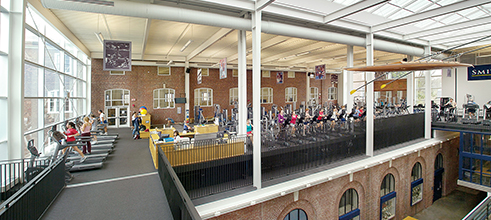Document Type
Article
Publication Date
3-15-2014
Publication Title
Journal of Applied Physiology
Abstract
Defining the "dose" of altitude training: how high to live for optimal sea level performance enhancement. J Appl Physiol 116: 595-603, 2014. First published October 24, 2013; doi:10.1152/japplphysiol.00634.2013.-Chronic living at altitudes of 2,500 m causes consistent hematological acclimatization in most, but not all, groups of athletes; however, responses of erythropoietin (EPO) and red cell mass to a given altitude show substantial individual variability. We hypothesized that athletes living at higher altitudes would experience greater improvements in sea level performance, secondary to greater hematological acclimatization, compared with athletes living at lower altitudes. After 4 wk of group sea level training and testing, 48 collegiate distance runners (32 men, 16 women) were randomly assigned to one of four living altitudes (1,780, 2,085, 2,454, or 2,800 m). All athletes trained together daily at a common altitude from 1,250-3,000 m following a modified live high-train low model. Subjects completed hematological, metabolic, and performance measures at sea level, before and after altitude training; EPO was assessed at various time points while at altitude. On return from altitude, 3,000-m time trial performance was significantly improved in groups living at the middle two altitudes (2,085 and 2,454 m), but not in groups living at 1,780 and 2,800 m. EPO was significantly higher in all groups at 24 and 48 h, but returned to sea level baseline after 72 h in the 1,780-m group. Erythrocyte volume was significantly higher within all groups after return from altitude and was not different between groups. These data suggest that, when completing a 4-wk altitude camp following the live high-train low model, there is a target altitude between 2,000 and 2,500 m that produces an optimal acclimatization response for sea level performance.
Keywords
Athletes, Erythropoietin, Maximal oxygen uptake
Volume
116
Issue
6
First Page
595
Last Page
603
DOI
10.1152/japplphysiol.00634.2013
ISSN
87507587
Rights
© 2014 the American Physiological Society.
Recommended Citation
Chapman, Robert F.; Karlsen, Trine; Resaland, Geir K.; Ge, R. L.; Harber, Matthew P.; Witkowski, Sarah; Stray-Gundersen, James; and Levine, Benjamin D., "Defining the "Dose" of Altitude Training: How High to Live for Optimal Sea Level Performance Enhancement" (2014). Exercise and Sport Studies: Faculty Publications, Smith College, Northampton, MA.
https://scholarworks.smith.edu/ess_facpubs/16



Comments
Archived as published. Open Access.